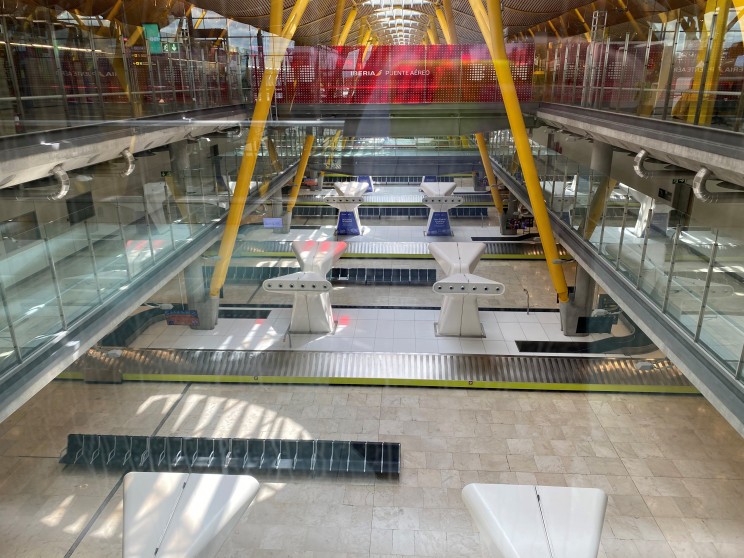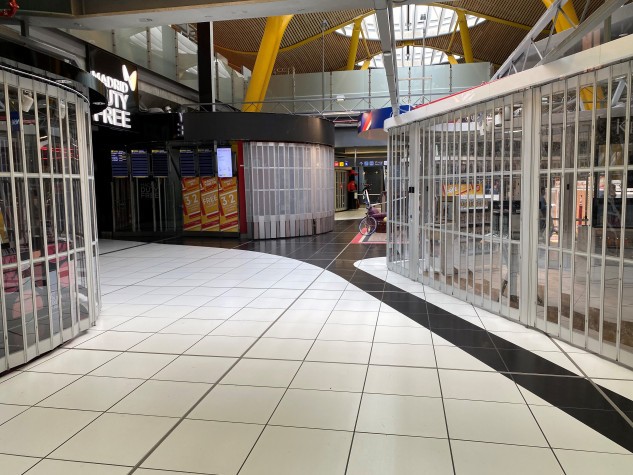
Traditionally one of Europe's busiest airports, the transfer of people and cars through the Adolfo Suárez Madrid Barajas Airport seems a distant memory. The picture that the building currently presents, with its lack of travellers, is ghostly, far from the hustle and bustle of the thousands of passengers and workers that usually fill the capital's airport. These photos are a clear example of the effect of the COVID-19 crisis on world travel, also having implications for other sectors such as tourism and of couse the general economic outlook. And no, these photos are not from the days before the inauguration of the airport. They were taken this month.
The capital's airport currently operates with some 90 flights and an average of 3,000 passengers a day, all concentrated in Terminal 4. The rest of the terminals (T1, T2 and T3) remain closed due to the drop in activity caused by the measures applied at international level to fight the coronavirus pandemic.
Flight screens show the grim reality and offer only a couple of trips to international and domestic destinations, where there are still connections to the Spanish islands for example. Activity on baggage belts is virtually non-existent, shops and restaurants within the terminal are closed and airline ground staff and security agents are barely moving.





